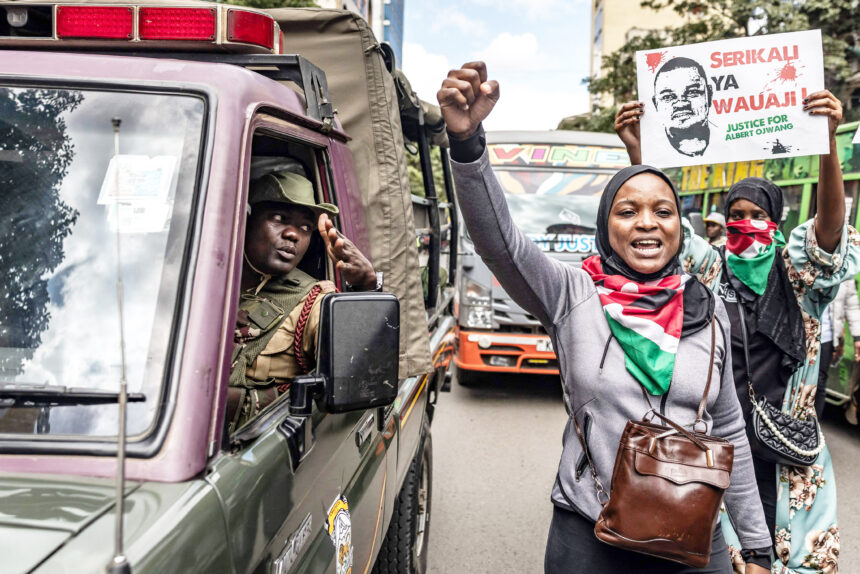NAIROBI – A year on from landmark protests over taxes and corruption, Kenya’s youth remains undeterred by a violent police response but faces conflicting ideas on where to go next.
“It was spontaneous, leaderless and unlike anything our country had ever seen,” said Hanifa Adan (28), who became one of the most high-profile figures of what became known as the Gen Z protests.
They were triggered by a finance bill that sharply raised taxes in a country where 40% of people still live in poverty and massive government corruption scandals emerge with alarming frequency.
The rallies grew rapidly until their deadly peak on 25 June, when thousands stormed parliament where lawmakers were debating the bill, ultimately forcing President William Ruto to withdraw it.
The protests petered out in the following weeks after a police response that left 60 dead and dozens arbitrarily detained.
“State violence was brutal and traumatising, and it was meant to intimidate and silence us. But instead, it exposed the desperation of a system clinging to power,” Adan told AFP.
For many, the protests represented a new form of political uprising for Kenya, with young people casting off the ethnic and geographic divides that have long defined its politics, focusing instead on policies.
But deep differences have emerged within the movement. While Adan has continued to engage in street protests over women’s rights and police brutality, others have taken a different course.
Kasmuel McOure (27) shot to fame during the protests with his fiery statements and dapper pressed suits. But he has now joined the establishment, allying with veteran opposition leader Raila Odinga, who recently forged an alliance with the government.
McOure now calls himself “a party man through and through” – a move perceived by many protesters as a betrayal.
He is defiant: “If you’re going to play politics then let’s play it properly,” he told AFP.
McOure refuses to be drawn on whether he will run for parliament at the next election in 2027 but said young people “must take political power” and that the Gen Z movement was too disorganised to foster real change.
“I thought the majority of the people who were calling themselves leaders were agitating for the sake of agitating,” he said.
Adan also sees political power as necessary, but not through compromise with the existing elite. “Many young people are no longer content with just protesting from the outside. They want to be the ones shaping policy, not just reacting to it,” she said. – Nampa/AFP


